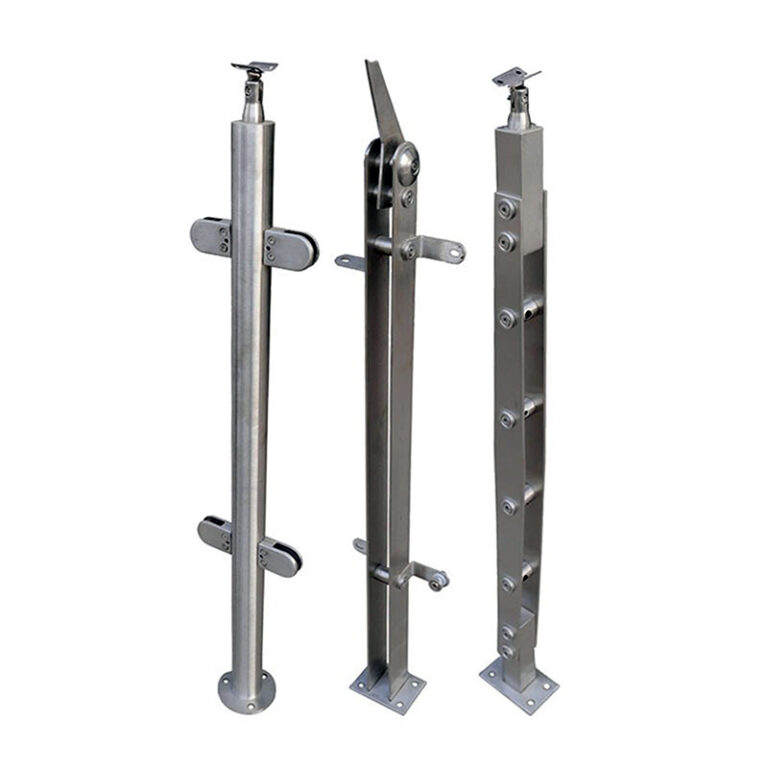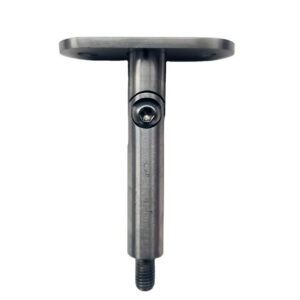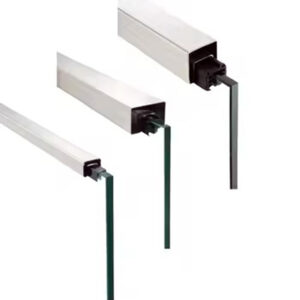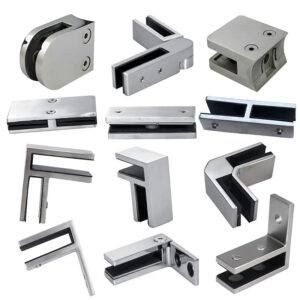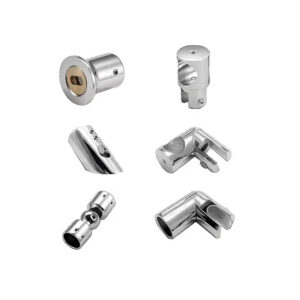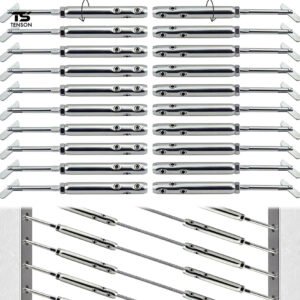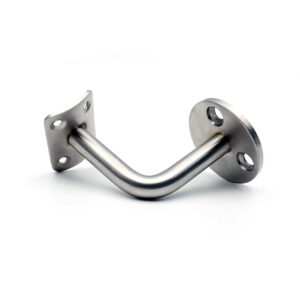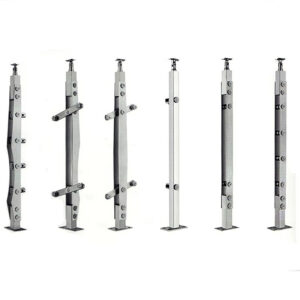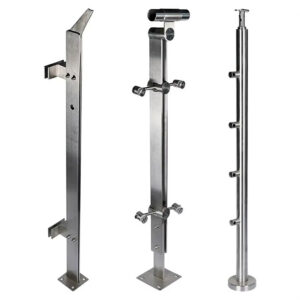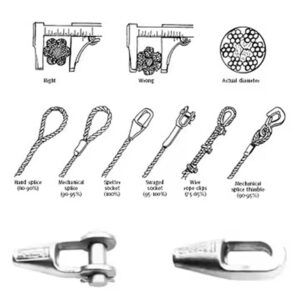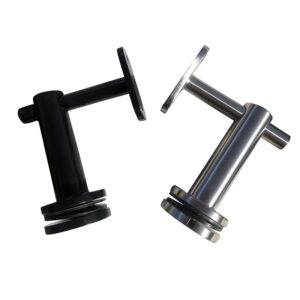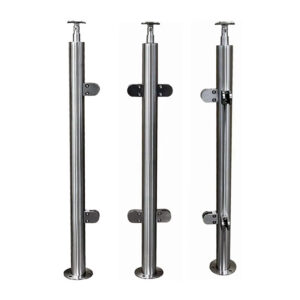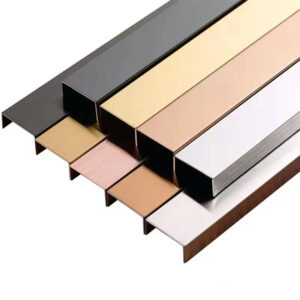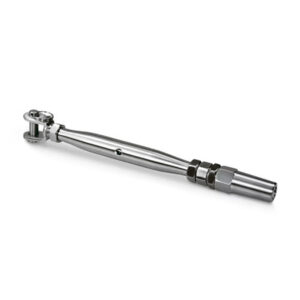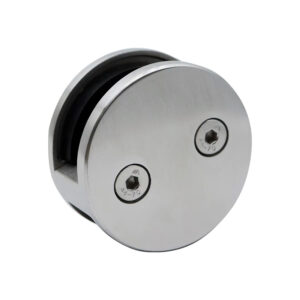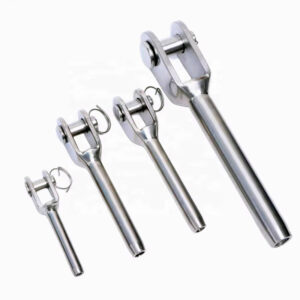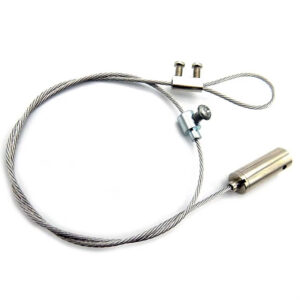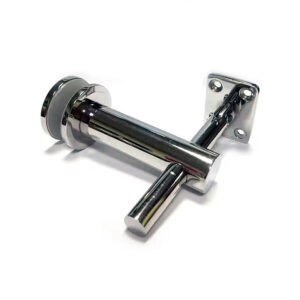When you’re specifying railing systems for marine and coastal environments, material failure isn’t just inconvenient—it’s expensive. After 23 years of manufacturing stainless steel hardware for saltwater applications, we’ve seen what works and what fails. The difference comes down to choosing the right grade steel, understanding galvanic corrosion, and selecting components designed for long-term performance in harsh environments. Esang Metal has developed precision saltwater hardware solutions that deliver reliable service life where standard materials fail.
Material Science: Why Grade Selection Matters
Stainless Steel Grades for Marine Applications
Not all stainless steel handles saltwater exposure equally. Here’s the reality contractors need to understand:
316L Stainless Steel contains molybdenum, which significantly improves corrosion resistance in chloride environments. For direct saltwater exposure—marine docks, oceanfront railings, coastal commercial projects—316L isn’t optional, it’s essential. The material costs 20-30% more than 304, but replacement projects cost far more.
304 Stainless Steel works well for inland applications and light coastal exposure where direct saltwater contact is minimal. Many contractors use 304 successfully for elevated decks and covered areas near coastlines, but it’s not suitable for dock railings or surf-zone installations.
| Material Grade | Chloride Resistance | Typical Applications | Service Life Expectation |
|---|---|---|---|
| 316L Marine Grade | Excellent | Direct saltwater contact | 15-20+ years |
| 316 Standard | Very Good | Coastal commercial, residential | 12-18 years |
| 304 Standard | Good | Light coastal exposure | 5-8 years marine environment |
Saltwater Resistant Fabrication 316L Advantages
Our saltwater resistant fabrication 316L processes focus on eliminating contamination during manufacturing. Cross-contamination from carbon steel tooling creates corrosion initiation points that fail prematurely in marine environments. We maintain dedicated 316L fabrication lines and use electropolishing to remove surface contaminants that standard passivation misses.
“Marine-grade stainless components show 3-5 times longer service life when manufactured with dedicated tooling and proper surface treatment.” —Marine Construction Standards Institute
▶ Get Material Specifications ◀
Product Applications: Real Marine Environments
Marine Grade Saltwater Systems ODM Solutions
Our marine grade saltwater systems ODM capabilities address unique saltwater challenges. Standard catalog products work for many applications, but marine environments often require custom solutions: non-standard post spacing for dock construction, specialized mounting for seawall installation, or integrated lighting systems for marina applications.
Marina and Dock Applications:
- Floating dock railings with flexible connections
- Fixed pier systems with wave load resistance
- Gangway railings with slip-resistant surfaces
- Boat lift platforms with integrated safety barriers
Oceanfront Commercial Projects:
- Restaurant deck railings with wind load ratings
- Hotel balcony systems with consistent aesthetics
- Boardwalk railings meeting ADA compliance
- Public viewing platforms with crowd load capacity
Residential Coastal Applications:
- Beachfront home balconies and stairs
- Pool deck perimeter systems
- Elevated walkway connections
- Outdoor kitchen and entertainment areas
Commercial Saltwater Resistant Railings Performance
Commercial saltwater resistant railings must balance aesthetics with durability. Office buildings, retail centers, and hospitality projects near coastlines need systems that maintain appearance while resisting corrosion. Our brushed finish 316L components resist fingerprints and water spots better than mirror polish in high-traffic marine environments.
Installation considerations for commercial projects include:
- Galvanic Compatibility: All fasteners, brackets, and connections use matching 316L material
- Drainage Design: Post caps and rail profiles shed water to prevent pooling
- Maintenance Access: Component design allows inspection and cleaning without disassembly
- Code Compliance: Wind load ratings for coastal exposure requirements
| Application Type | Recommended Grade | Surface Finish | Maintenance Schedule |
|---|---|---|---|
| Direct saltwater | 316L Marine | Brushed #4 | Quarterly cleaning |
| Coastal commercial | 316L Standard | Brushed #4 | Semi-annual cleaning |
| Elevated coastal | 316 Standard | Mirror or Brushed | Annual inspection |
“Proper material selection reduces maintenance costs by 60-70% over project lifetime in marine applications.” —Coastal Construction Research Foundation
Custom Saltwater Manufacturing Capabilities
Our custom saltwater manufacturing addresses unique project requirements. Twenty-three years of marine project experience means we understand thermal expansion in temperature-varying environments, wind load requirements for exposed locations, and connection methods that maintain integrity through storm cycles.
Custom Solutions Include:
- Non-standard rail heights for specific applications
- Integrated cable or glass panel systems
- Specialized mounting hardware for unique substrates
- Modular systems for phased construction projects
▶ Discuss Your Marine Project ◀
Technical Performance in Saltwater Environments
Corrosion Resistance Testing Standards
Our precision saltwater hardware undergoes accelerated corrosion testing per ASTM B117 salt spray standards. While laboratory testing provides baseline data, real-world performance depends on installation quality, maintenance practices, and actual exposure conditions.
Performance Metrics:
- Salt Spray Resistance: 1000+ hours without visible corrosion (316L grade)
- Crevice Corrosion: Resistant to initiation in overlapping surfaces
- Pitting Resistance: PREN values >25 for marine applications
- Stress Corrosion: No cracking under design loads in saltwater
Galvanic Corrosion Prevention
Mixed materials create galvanic cells in saltwater, accelerating corrosion of more active metals. Our system design eliminates galvanic couples by using consistent 316L material throughout—posts, rails, brackets, fasteners, and hardware components.
Critical Connection Points:
- Post-to-concrete interfaces with stainless anchors
- Rail-to-post connections with matching hardware
- Glass or infill panel attachment systems
- Electrical isolation where dissimilar materials meet
“Consistent material selection across all system components reduces galvanic corrosion risk by 90% in marine installations.” —National Association of Corrosion Engineers
| Test Standard | Requirement | Our Performance | Application Relevance |
|---|---|---|---|
| ASTM B117 Salt Spray | 720 hours minimum | 1000+ hours | Direct saltwater exposure |
| ASTM G48 Pitting | Method A, 24 hours | No pitting observed | Crevice resistance |
| ASTM G36 Stress Corrosion | No cracking | Pass at design loads | Structural integrity |
Installation and Maintenance Considerations
Marine Environment Installation
Saltwater installation requires specific techniques to ensure long-term performance. Standard construction practices often introduce corrosion risks that manifest months or years later.
Installation Best Practices:
- Use only stainless steel tools during final assembly
- Apply anti-seize compound to threaded connections
- Ensure complete drainage from horizontal surfaces
- Maintain electrical isolation from dissimilar metals
- Follow recommended torque specifications to prevent crevice corrosion
Maintenance Requirements:
- Quarterly: Fresh water rinse and visual inspection
- Semi-annually: Detailed cleaning with mild detergent
- Annually: Connection inspection and re-torquing if needed
- Storm Response: Post-storm inspection for damage or debris accumulation
Contractors report 40-50% reduction in maintenance calls when following these protocols compared to standard installation practices.
▶ Get Installation Guidelines ◀
Frequently Asked Questions
Q: How do I choose between 316 and 316L for marine applications?
316L has lower carbon content, reducing carbide precipitation that can initiate corrosion. For direct saltwater exposure, 316L provides better long-term performance, especially in welded assemblies.
Q: What’s the realistic service life for saltwater railing systems?
Properly specified 316L systems typically provide 15-20 years of service with routine maintenance. Location matters—protected areas last longer than surf-zone installations.
Q: Can I mix grades within the same system to control costs?
Not recommended. Galvanic action between different grades can accelerate corrosion of the more active material. Use consistent grades throughout the system.
Q: How much additional cost should I budget for marine-grade materials?
Material costs run 25-35% higher than standard stainless, but total project cost increase is typically 8-12% when considering installation and long-term maintenance savings.
Q: What surface finish works best for marine applications?
Brushed #4 finish resists staining and water spots better than mirror polish in saltwater environments while maintaining professional appearance.
Q: Do you provide engineering support for coastal wind loads?
Yes, our technical team provides load calculations and connection details for coastal exposure requirements. Twenty-three years of marine project experience helps ensure compliant, durable installations.
▶ Connect with Our Marine Specialists ◀
Marine and coastal railing projects demand materials and manufacturing precision that standard approaches can’t deliver. Our salt water resistant components combine proven 316L materials with manufacturing processes designed for long-term saltwater performance. When project success depends on corrosion resistance and structural integrity, experience matters—and 23 years of marine applications provides the foundation for reliable solutions that protect your reputation and your client’s investment.
